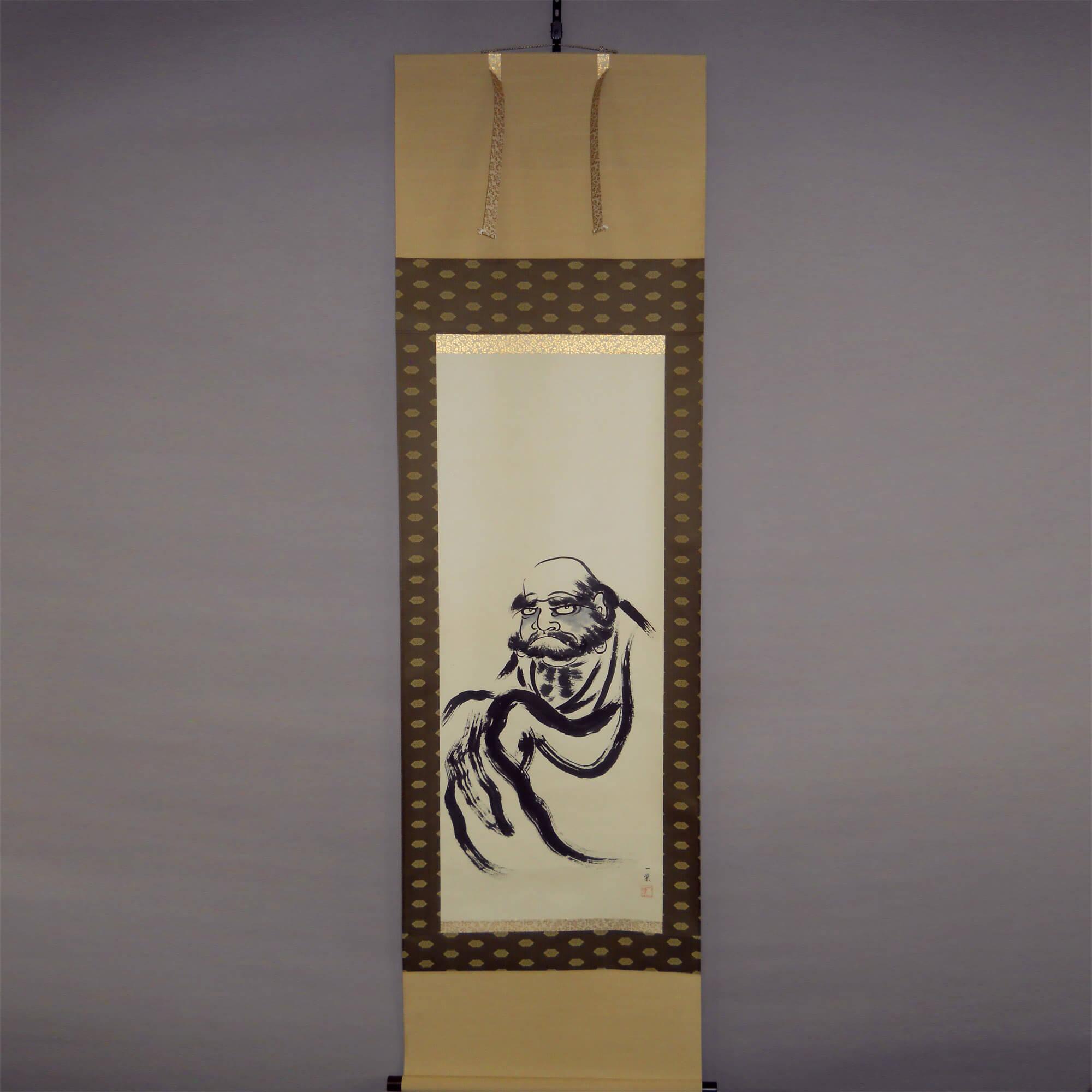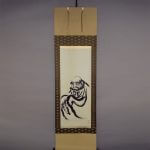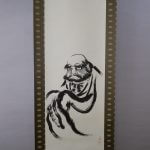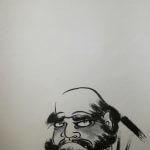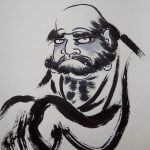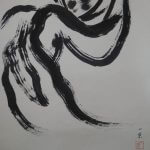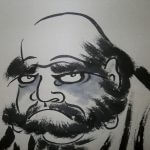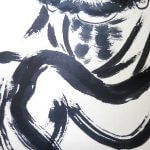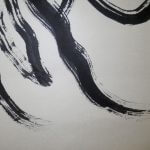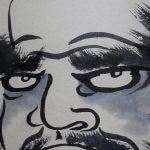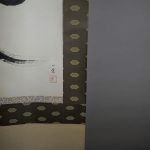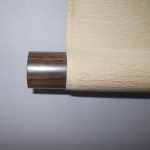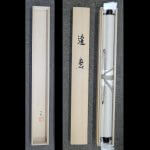Kakejiku Hanging Scroll: Bodhidharma / Takagi Ichiei - Daruma
- Product ID
- B0052
- Name
- Takagi Ichiei
- Profile
A Japanese-style painter.
- Size
- 600mm x 1865mm
- Roller End Material
Red sandalwood- Material of the Work
- Japanese paper
- Stock Condition
- Sold out
- Description
It is said that Zen was introduced to China by Daruma (Bodhidharma) and was passed down in its original form to “Rokuso Enō”(sixth leader Enou). Zen was further divided into The Goke Shichishū of Zen (five sects and seven schools derived from the original Zen Buddhism) such as the “Rinzai-shū” and “Sōtō-shū” sects. It has also significantly influenced the course of development of Japanese religion in general. Emphasis is placed on Daruma in Zen, and sometimes the word “Soshi” (founder) is used to refer to him.
This work is a painting of Bodhidharma by Takagi Ichiei. The Bodhidharma, painted with hasty but strong brushstrokes, illustrates full vitality, which demonstrates the artist’s skillful talent.

